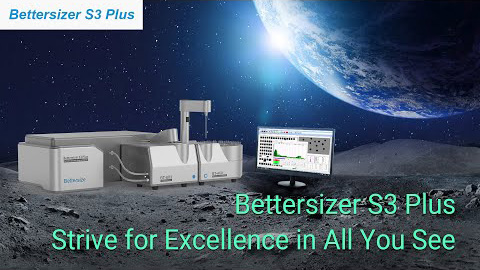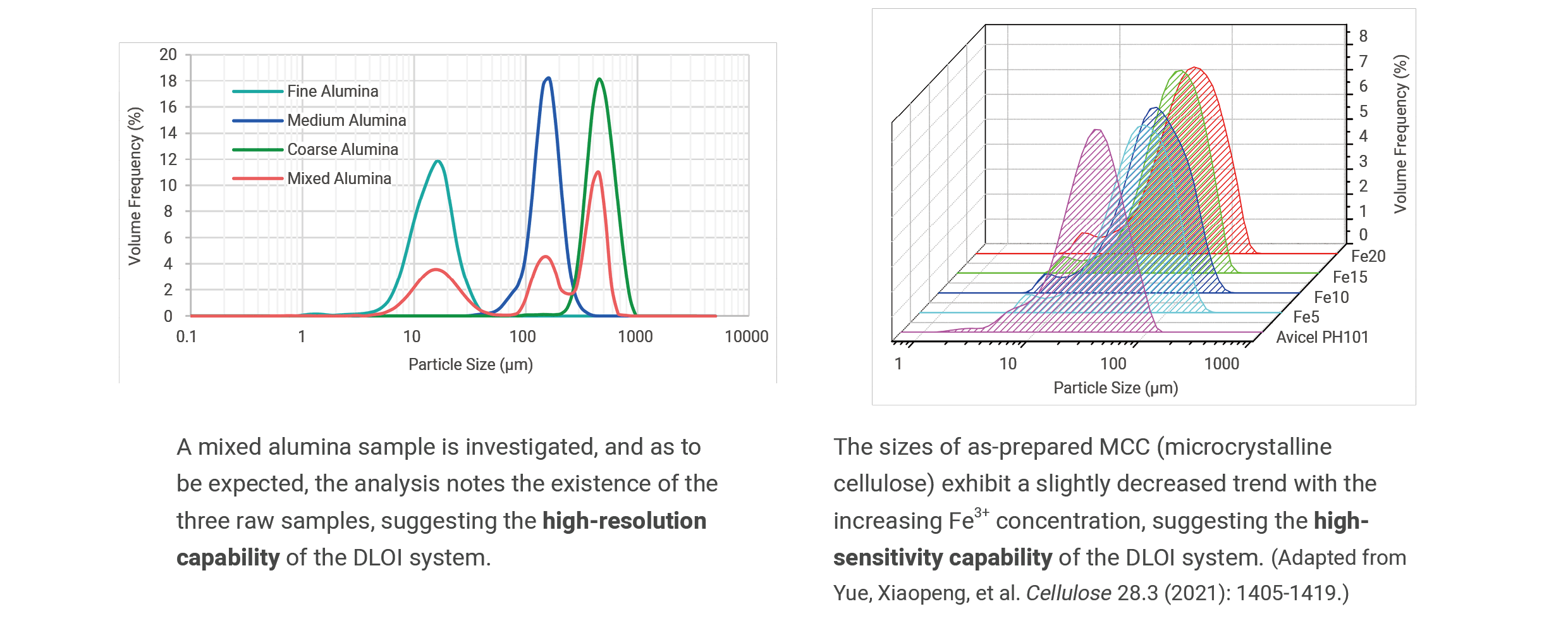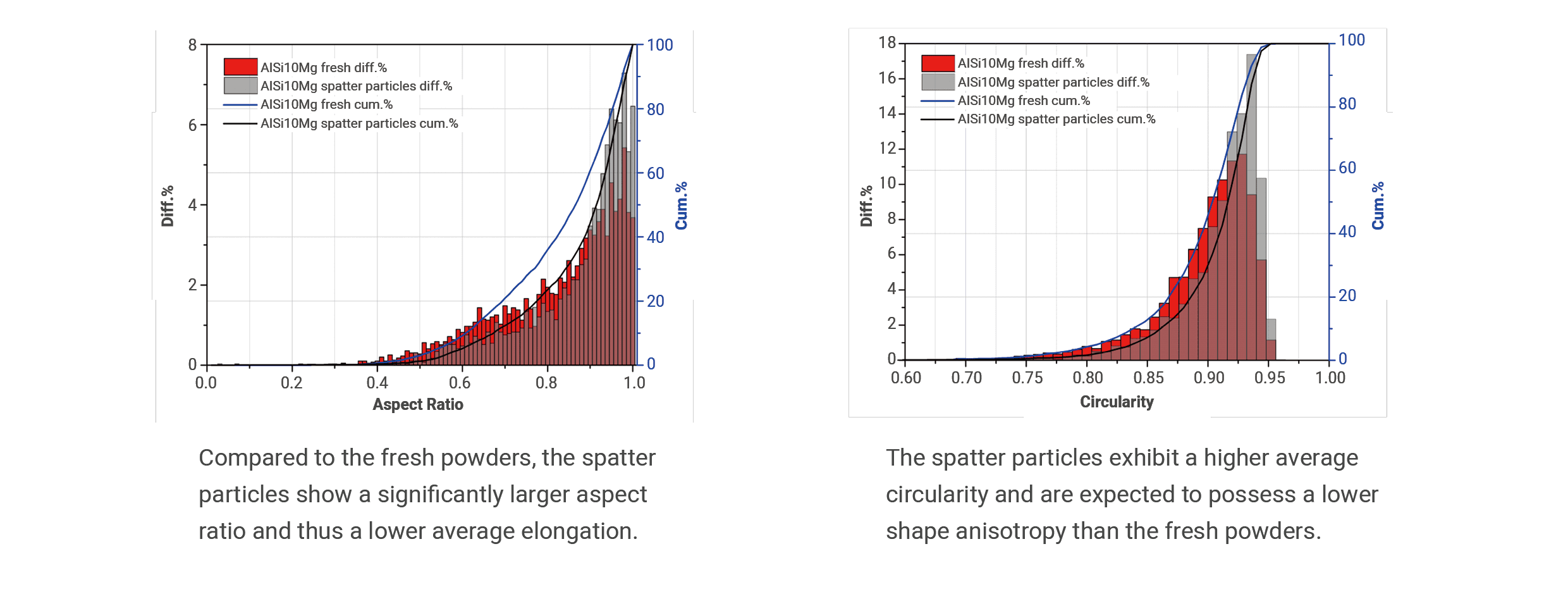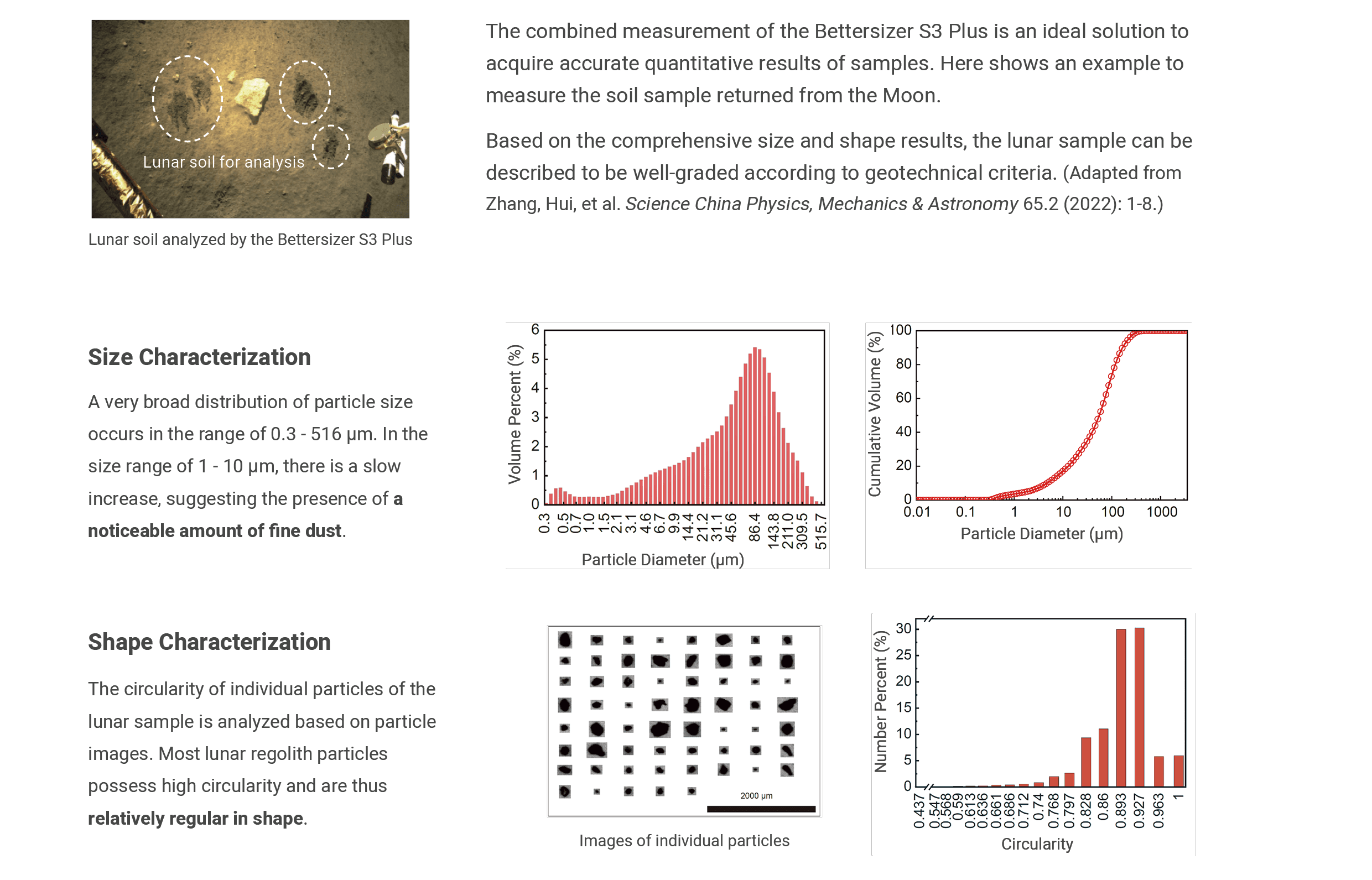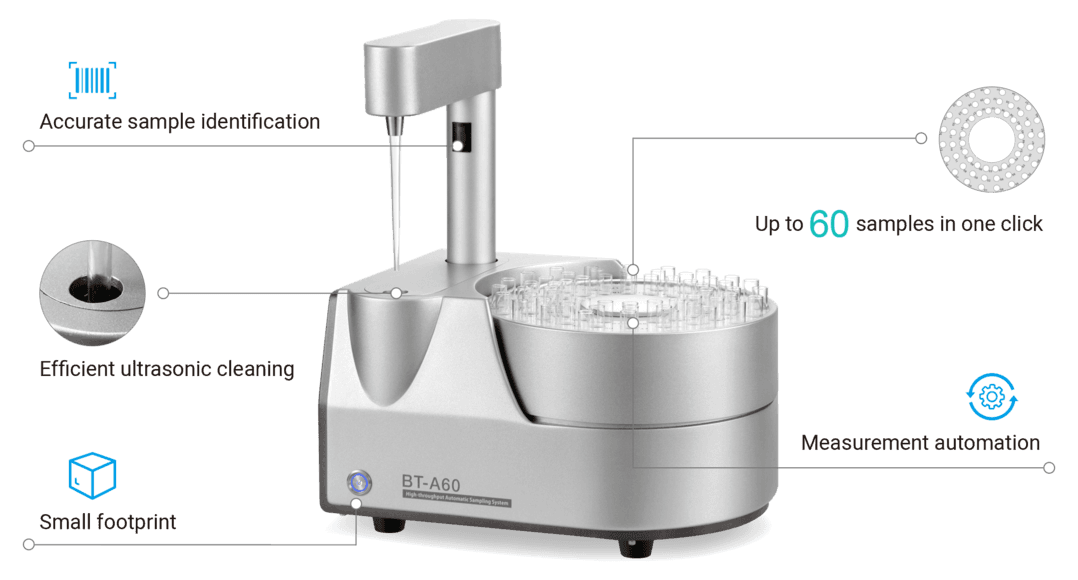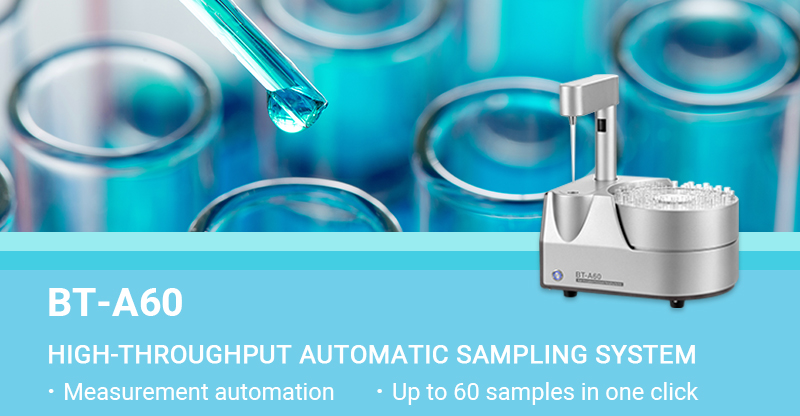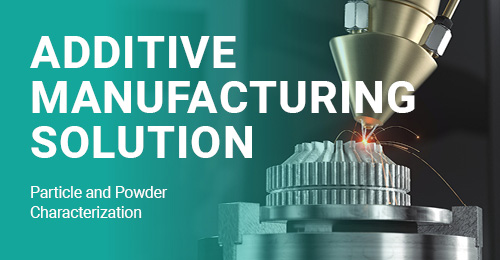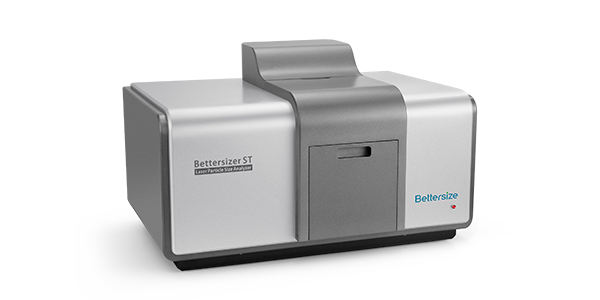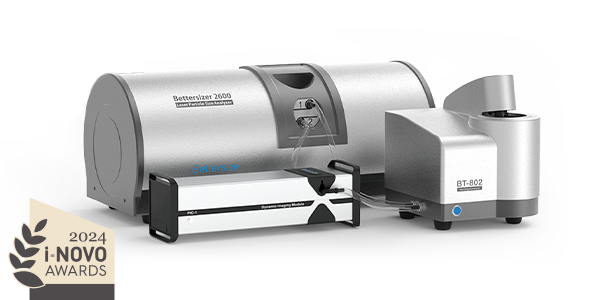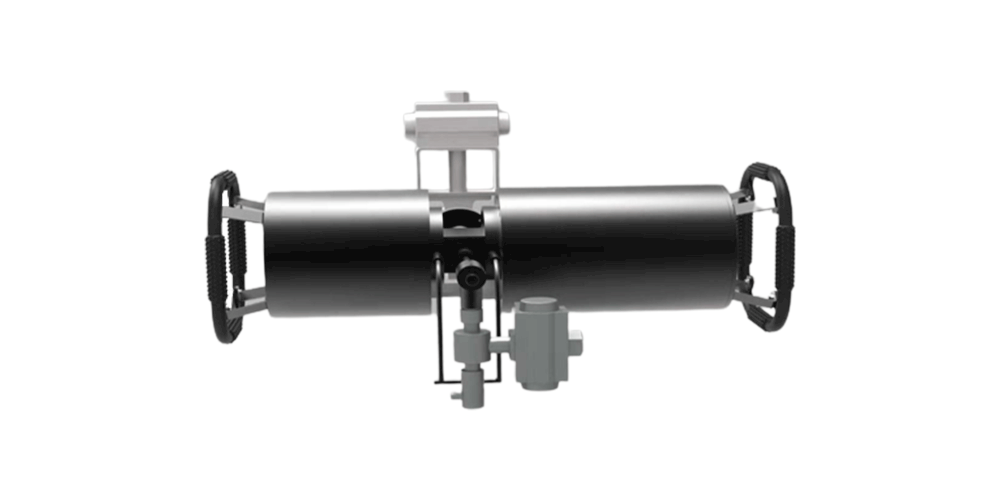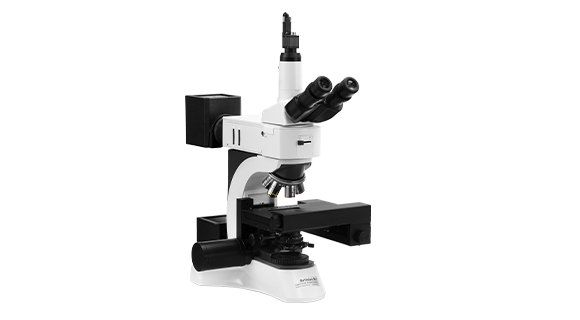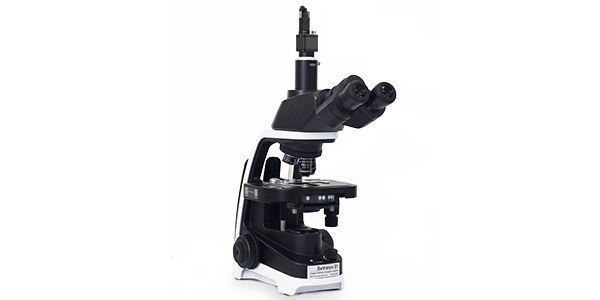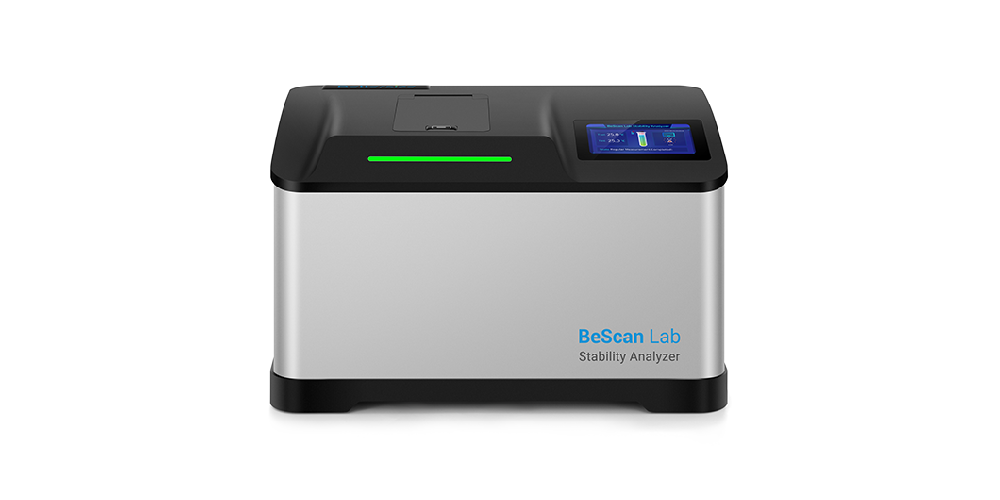Bettersizer S3 Plus
O Bettersizer S3 Plus combina difração a laser e análise dinâmica de imagens em um único instrumento. Ele pode medir o tamanho e a forma das partículas de 0,01 μm a 3500 μm. Sua sensibilidade excepcional para partículas ultrafinas ou de tamanho grande e sua resolução insuperável fazem dele o mais poderoso analisador de tamanho e forma para pesquisadores entusiastas que realizam pesquisas científicas de ponta.
Recursos e benefícios
- ● A faixa de medição é de 0,01 a 3.500μm (sistema a laser), 2 a 3.500μm (sistema de imagem)
- ● Combinação de difração a laser e análise dinâmica de imagens em um único instrumento, obtendo resultados de tamanho e forma simultaneamente
- ● O sistema patenteado DLOI (Dual Lenses & Oblique Incidence) permite a medição de partículas ultrafinas de até 0,01 um
- ● A tecnologia de imagem de câmera dupla pode mostrar imagens de partículas em tempo real e detectar partículas grandes de até 3500 um
- ● A medição do índice de refração determina o índice de refração de amostras desconhecidas e melhora a confiabilidade dos resultados
- ● Conformidade com 21 CFR Parte 11, ISO 13320, USP <429>, CE
Vídeo
How to Install and Operate Bettersizer S3 Plus 
Bettersizer S3 Plus | Strive for Excellence in All You See 
BT-A60 Autosampler | Demo 
Demo of Bettersizer S3 Plus 2-In-1 Particle Size and Shape Analyzer 
Fundamentals of Bettersizer S3 Plus 2-In-1 Particle Size and Shape Analyzer 
Bettersizer S3 Plus | Particle Size and Shape Analyzer 
Bettersizer S3 Plus Overview | Strive for Excellence in All You See 
Visão geral
Recursos
Desempenho
Tecnologia
Especificação
Acessório
1. Visão geral do analisador de tamanho e forma de partículas Bettersizer S3 Plus
O Bettersizer S3 Plus é um analisador de tamanho e forma de partículas por difração a laser equipado com duas câmeras CCD de alta velocidade (ampliação de 0,5X e 10X) para capturar imagens da amostra que está sendo medida. Durante a medição, as partículas dispersas no meio escolhido são bombeadas através de duas células de amostra. Na primeira, a luz do laser de ondas curtas (532 nm) ilumina as partículas e é espalhada. Os 96 detectores detectam sinais ópticos em uma faixa de ângulo de 0,02° a 165°. As câmeras CCD tiram fotos continuamente das partículas através da segunda célula de amostra para fornecer informações sobre a forma na faixa de 2 a 3500 µm.
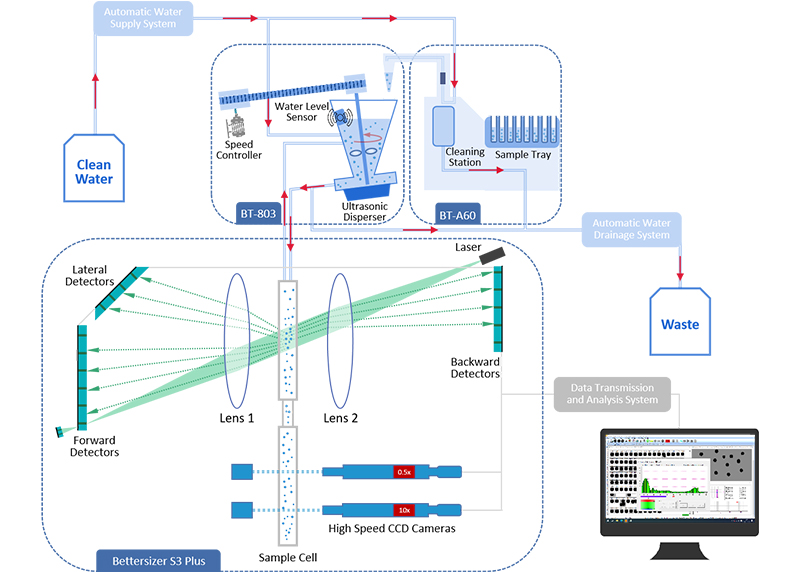
2. Sistema patenteado DLOI (Dual Lenses Oblique Incidence): Difração a laser
Recursos e benefícios:
- Mede partículas ultrafinas com precisão em uma ampla faixa angular (0,02 - 165°) com 96 detectores
- Sistema óptico robusto com resolução superior usando o design de lentes duplas
- Sistema de laser único de onda curta (532 nm) oferece um espectro de dispersão contínuo com um comprimento de onda consistente
- Tempo zero de estabilização e pré-aquecimento necessário com uma fonte de luz de estado sólido
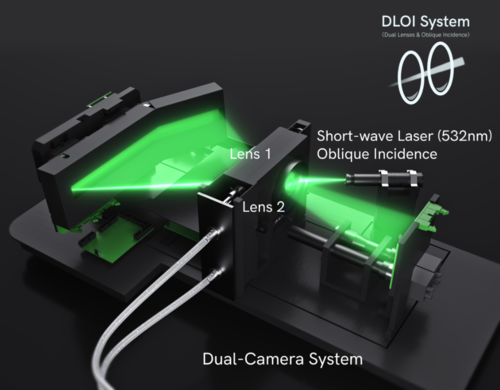

3. Sistema de câmera dupla: Análise dinâmica de imagens
A análise de imagem dinâmica pode fortalecer sua compreensão dos materiais com a forma abrangente ou informações morfológicas que são independentes da difração do laser. Partículas individuais com propriedades geométricas específicas, como aglomerados, partículas trituradas e partículas estranhas, podem ser rastreadas com eficiência por meio do sistema de câmera dupla.
Recursos e vantagens:
- Câmeras de 0,5x e 10x - fotografam uma gama extremamente ampla de tamanhos de partículas
- Luzes estroboscópicas de alta velocidade - capturam até 10.000 imagens de partículas em 60 segundos, oferecendo resultados de formas autênticas
- Adequado para medir amostras heterogêneas com propriedades ópticas desconhecidas
O Bettersizer S3 Plus integra difração a laser e análise dinâmica de imagens em um único instrumento para caracterizar simultaneamente o tamanho, a distribuição e o formato das partículas em uma ampla faixa dinâmica. Trabalhando em conjunto, os usuários podem obter uma compreensão mais profunda do comportamento do material para agilizar o processo de solução de problemas e o processo de desenvolvimento de métodos.
- Sistema DLOI - mede com precisão partículas ultrafinas de até 0,01 μm
- Sistema de imagem de câmera dupla - detecta com eficiência partículas de tamanho grande de até 3.500 μm
- Sistema 2 em 1 - obtém simultaneamente resultados de tamanho e forma de partículas
- Tempo rápido para o resultado - gera resultados rapidamente em 10 segundos
5. Aplicativos
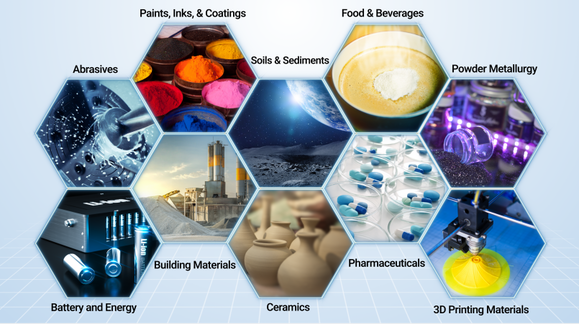

Citations
- Bettersizer 2600
Functional redundancy as an indicator for evaluating functional diversity of macrobenthos under the mussel raft farm near Gouqi Island
DOI: 10.1016/j.aquaculture.2023.740024 Read ArticleZhejiang Ocean University | 2024Biological traits analysis (BTA) helps to evaluate the effects of different environmental variables on the traits-based functional composition of macrobenthos. However, research on functional traits of macrobenthos under mussel farming is limited. We investigated the spatial and temporal response of the benthic system in terms of taxonomic and functional diversity to environmental variables of farming and natural stressors resulting from suspended mussel farming near Gouqi Island of eastern China Sea. The functional traits of macrobenthic assemblages under mussel farming were characterized by “medium adult body size”, “vermiform body form”, “high flexibility”, “infauna”, “semi-motile”, “gonochoristic”, “surface deposit-feeders”, “carnivores”, “semi-motile burrowers”, and “tube-dwellers”. Functional redundancy was stable in response to mussel farming stresses among seasons, whereas species diversity showed efficient to evaluate natural variables. Functional diversity was significantly affected by farming stressors rather than natural variables, Further analysis using multivariate methods together with continuous monitoring were highlighted to evaluate the impacts of mussel farming. Our results reinforce the importance of macrobenthic species and functional traits analysis to evaluate human stresses driven impacts in offshore ecosystems. By analysing the environmental variables with different sources, independently, we concluded the main effects of human pressures on macrobenthic community. Such distinction could be particularly effective to isolate variable environmental descriptors and evaluate their effects on functional diversity, making the current approach promising for the evaluation of ecological effects of anthropogenic stressors in aquaculture areas. - Bettersizer 2600
Degradation characteristics and utilization strategies of a covalent bonded resin-based solid amine during capturing CO2 from flue gas
DOI: 10.1016/j.seppur.2023.125621 Read ArticleChina University of Petroleum | 2024In this study, various types of degradation as well as attrition which are possibly encountered in a circulating fluidized bed temperature swing adsorption (CFB-TSA) process, were conducted experimentally to evaluate the stability of a resin-based solid amine sorbent. Other characterizations methods, such as elemental analysis (EA), Fourier transform infrared spectroscopy (FTIR) etc. were applied to further reveal the degradation mechanisms. The results showed that thermal degradation occurs from 140–160 °C due to the decomposition of amine group. The CO2-induced degradation occurs from a higher temperature of 160–180 °C accompanied by the production of urea. Hydrothermal stability is good below 130 °C, but the ionic impurities in steam crystalized on particle surface can accelerate the degradation. Oxidative degradation is the most harmful, which starts at a lower temperature of 70–80 °C with the formation of aldehyde. The existence of H2O in atmosphere can alleviate the oxidative and CO2-induced degradations. The employed sorbent has a very low attrition index of 0.05, which is 1–2 orders lower than typical commercial fluidized bed catalysts. Based on the results of stability evaluation, some design suggestions for proper utilization of this sorbent or other similar resin-based sorbents have been provided in an industrial CFB-TSA process.
- Bettersizer 2600
De-branching of starch molecules enhanced the complexation with chitosan and its potential utilization for delivering hydrophobic compounds
DOI: 10.1016/j.foodhyd.2023.109498 Read ArticleShihezi University | 2024The current study aimed to prepare the complexes between debranched-waxy corn starch and chitosan polymers (DBS-CS), and then investigated their corresponding structural characteristics, rheological property and potent application in Pickering emulsion. The results indicated that the existence of chitosan significantly inhibited starch short-range molecular rearrangement for all DBS-CS samples, which was manipulated by both debranching treatment and chitosan content. Interestingly, this is the first study to reveal that the outstanding peak at 1.8 ppm in 1H NMR spectrum for sample DBS-CS was gradually shifted towards a lower-field region following an increased chitosan content. Moreover, the debranching treatment shifted the crystallinity pattern from A-type to B-type and the relative crystallinity of DBS-CS decreased gradually with the increased content of CS. All samples had a pseudoplastic fluid and shear-thinning behavior with an enhanced shear resistance following the complexation. The DBS-CS was applied in a Pickering emulsion for showing a greater emulsifying stability and a lower gel strength than native NS-CS prepared emulsion. Importantly, the encapsulation ability of curcumin in the DBS-CS emulsion was significantly improved, followed by an increase of 15.45% for its corresponding bioavailability compared to the control. Therefore, this study might highlight a potential carrier for delivering the bioactive substances in a green pattern. - Bettersizer 2600
Heat-induced aggregation behavior of wheat gluten after adding citrus pectin with different esterification degree
DOI: 10.1016/j.foodhyd.2023.109420 Read ArticleGansu Agricultural University | 2024Wheat gluten aggregation during heat treatment is beneficial to the final quality of gluten-based products. Exogenous pectin can affect gluten aggregation. However, the effect of pectin with different degrees of esterification on the heat-induced aggregation behavior of gluten and its possible mechanism are still unclear. Thus, the heat-induced aggregation behavior of gluten after adding pectin with different esterification degree was studied in this study. When the temperature was raised from 25 °C to 95 °C, pectin affected gluten aggregation and was related to the degree of esterification. Specifically, the results of rheological properties and particle size indicated that low-ester pectin improved the viscoelasticity of gluten and promoted gluten aggregation. Thermal properties revealed that enthalpy of gluten added with low-ester pectin (37%) increased from 92.96 J/g to 95.40 J/g during heating process. Structurally, the fluorescence intensity and surface hydrophobicity of gluten added with low-ester pectin (37%) were lower than those added with high-ester pectin (73%). In addition, low-ester pectin (37%) significantly increased the disulfide bond content (from 15.31 μmol/g to 18.06 μmol/g) and maintained β-sheet content of gluten compared with gluten alone at 95 °C, indicating that low-ester pectin was more likely to induce gluten aggregation. However, scanning electron microscope showed that the gluten added with low-ester pectin (46%) exhibited a denser network structure at 95 °C than that added with low-ester pectin (37%). These results will provide a theoretical base for the regulation of gluten aggregation and the quality of gluten-based products by pectin with different esterification degree.
- 1
- 2
- 3
- 4
- 5
- 6
- 84
Recursos selecionados
Depoimentos


Analisador de tamanho de partícula relacionado
-
Bettersizer ST
One-stop Particle Size Analyzer
Dispersion type: Wet
Measurement range: 0.1 - 1,000µm
Repeatability: ≤1% variation
-
Bettersizer 2600
Laser Diffraction Particle Size Analyzer
Measurement range: 0.02 - 2,600μm (Wet dispersion)
Measurement range: 0.1 - 2,600μm (Dry dispersion)
Measurement range: 2 - 3,500μm (Dynamic imaging)
-
BT-Online1
Online Particle Size Analyzer
Dispersion type: Dry
Measurement range: 0.1 - 1,000μm
Accuracy: ≤1% (D50 of certified reference material)
-
BeVision D2
Dynamic Image Analyzer
Dispersion type: Dry
Measurement range: 30 - 10,000μm
Technology: Dynamic Image Analysis
-
BeVision M1
Automated Static Image Analyzer
Dispersion type: Dry
Measurement range: 0.3 - 10,000 μm
Technology: Static Image Analysis
-
BeVision S1
Classical and Versatile Static Image Analyzer
Dispersion type: Dry & Wet
Measurement range: 0.3 - 4,500 µm
Technology: Static Image Analysis
-
BeScan Lab
Stability Analyzer
Particle size ranges from 10 nm to 1 mm
Volume fraction up to 95%
Compliance with ISO/TR 18811, 13097, 21357, 22107






